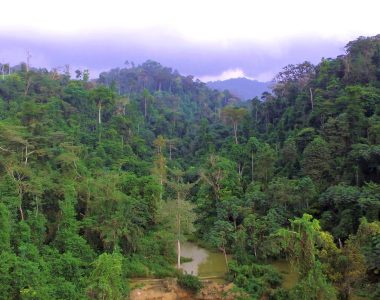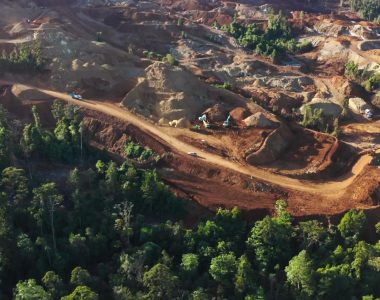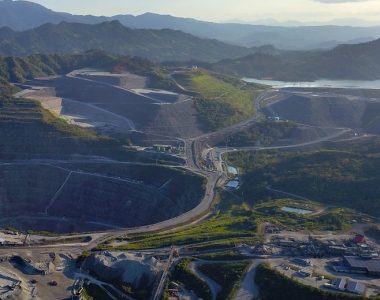This is what the economy of the Amazon…
10 July, 2024
Thursday 26 october 2023
The demand for minerals for consumer goods has doubled between 2000 and 2023 – a trend that is expected to continue in the coming decades. Large quantities of minerals are needed for the production of renewable energy sources, like wind turbines, solar cells and batteries for electric cars and for e-bikes. The World Bank estimates that the demand for raw materials such as copper ore, bauxite (aluminium), cobalt, nickel and manganese needed for the energy transition will increase by 500% by 2050.
A fair energy transition comprises many stakeholders. There are actors like consumers and mining companies, and there are those who feel the impacts of mining for this transition, like nature and Indigenous Peoples & local communities (IP&LCs). For a just energy transition, it is crucial that we work towards a circular approach in which a reduction in energy consumption is a priority.
In addition, we need to set stricter requirements for the responsible extraction of raw materials. A bottom line has to be established and monitored: a clear limit that indicates where and how mining may take place, so that the damage to people and nature is limited and remains within set boundaries.
How can we ensure that the mining of transition minerals is done in a responsible manner using international best practices, without the risk of making the earth unliveable and without victimising nature and people whilst providing net societal benefits?
The Initiative for Responsible Mining Assurance (IRMA) has developed and is further developing a standard for responsible mining that industrial-scale mining companies (and others involved in the mineral / metal value chains) can use to assess and report on their site level practices.
Mining operations have a major impact on nature and may affect up to one third of the world’s forest ecosystems as forest loss and degradation can occur within a 70 km radius of the mining activity itself. This is because of the nature of the exploitation, but also because of the location of mines – 77% of all mines are located within a radius of 50 km of important biodiversity areas [1]https://www.wwf.de/fileadmin/fm-wwf/Publikationen-PDF/Wald/WWF-Studie-Extracted-Forests.pdf and 44% of all mining takes place in forests [2]https://documents1.worldbank.org/curated/en/104271560321150518/pdf/Forest-Smart-Mining-Identifying-Factors-Associated-with-the-Impacts-of-Large-Scale-Mining-on-Forests.pdf .
Destruction of the habitat in the actual exploitation site results in biodiversity loss. In a wider area, mine waste residuals lead to poisoning through food and water, affecting animals, vegetation and micro-organisms. Furthermore, most modern mining techniques have high water demands for extraction, processing, and waste disposal. Wastewater from these processes can pollute water sources nearby and downstream (incl. coastal waters) and deplete freshwater supplies in the region surrounding the mine.
The Atewa Forest Reserve in eastern Ghana (263 km2) is home to a wide variety of plants and animals. It is threatened by the development of a bauxite mine whereby layers of soil and rock are removed. This means all trees and other vegetation are cleared from the area, together with the species living in it. In practice this would mean the end of the Atewa Forest with its unique biodiversity and its important ecosystem services.


A large part of raw materials needed for the energy transition are extracted from the global South for meagre pay, under poor working conditions and with cases of human rights violations, and are exported to the North.
The mining process includes physically demanding jobs and can expose workers to various physical risks such as extreme temperatures, humidity, noise, vibrations, as well as inadequate protective gear and extended work hours. Safety risks may include accidents due to rock fall, plant collision, fire and/or explosion. The Copenhagen-based The World Counts claims that more people are killed or injured in the mining industry than in any other industry. More than 15,000 miners are killed every year[3]https://www.theworldcounts.com/challenges/planet-earth/mining/health-effects-of-mining. Nobody really knows how many people are injured in mining, but it is likely to be hundreds of thousands of people every year.


Recent news reports have documented a rising death toll across the mines and smelters of Sulawesi province in Indonesia. Between 2015 and 2022, Indonesian independent civil society organization Trend Asia counted 47 workplace-related deaths and 76 injuries across various nickel-smelters in the country.
Indonesia’s Tompotika peninsula, home to an enormous wealth of biodiversity, is now also threatened by mining. Watch the video.
More than half of the mining needed for the energy transition is in or around the territories of Indigenous peoples. Communities in mineral-rich countries suffer from deforestation, environmental degradation, exploitation and health damage. Where forests are cleared for large-scale mining activities and associated heavy infrastructure, it is often at the expense of territory and rights of Indigenous peoples and other residents of the area. Globally 1.6 billion people depend on forests for their livelihoods.


A planned copper and gold mine in the southern Philippines, the Tampakan project, stretches across the ancestral lands of five tribal councils, threatening their source of food, medicine and their spiritual grounds. The mine requires the eviction of around 4,000 people. Clans and families have been split over their opposition or support for the mining company.
Since 2003, various units of the Philippine military, an armed paramilitary detachment established partly to protect private investments and security contractors hired by the mining company have been deployed in the area. After decades of conflict that has led to the deaths of at least two dozen people the Tampakan mine now seems closer than ever to reaching commercial production, thanks to fatigue at the local level and a pro-mining shift in Manila.
IRMA is the only standard for the mining sector that utilises a governance system in which affected communities, NGOs, and organised labour have equal voting power alongside mining companies, purchasing companies, and the investor and finance sectors. It entails detailed and comprehensive requirements based on 400+ best practices, requires independent third-party site-level audits that engage local stakeholders and rights holders and transparent public reporting. The IRMA Standard is a global standard applicable across jurisdictions and types of materials.
Like for any standard, there is room for improvement of IRMA. IUCN NL would like to see that the IRMA standard under its new IRMA-Ready Standard[4]https://responsiblemining.net/what-we-do/standard/draft-irma-ready-standard/#irma-ready-content includes a clear position on No-Go zones – like for the deep sea and rainforests – as well as more emphasis on indirect and cumulative effects on biodiversity and ecosystems, ecosystem services and forest protection and No Nett Loss.
Whereas the IRMA Standard is not applicable to the manufacturing and assembly of products, or end-product use and disposal, the public and business sectors and consumers can encourage manufacturers and retailers to only deal with materials and products that are sourced in mines that are using the IRMA standard for responsible mining, with an eye for the interests of both nature and people and with minimum social and environmental costs and maximum long term benefits for society as a whole.

